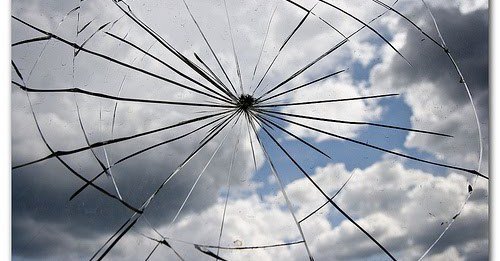Did you hear the theory of broken glass?

Did you hear the theory of broken glass?
Imagine eating orange while walking down the road. You started robbing, and when you finished, you found that there was a lot of shells left, so you saw that the trash was too far away. And your eyes are on the ground önce If you see other garbage on the ground, you will probably throw it on the ground, but if there is no garbage on the floor, you will think twice before throwing the orange peels on the ground.
The theory of broken windows or the more well-known name of broken glass theory predicts that if there is any deterioration in the environment, there is no law.
Broken glass experiment
Professor Philip Zimbardo, who is known for his famous Stanford prison experience and inspired many books and films, led the way to another successful but relatively less famous research. In this experiment, two unclaimed vehicles were left on two separate streets, one rich in another poor neighborhood.
It's not hard to predict the outcome. Within a few hours, the vehicle in the poor neighborhood suffered a great deal of damage, while the other remained undamaged. According to these results, poverty and othering played a major role in the treatment of this crime.
But the experiment was still incomplete. A week later, the car in the poor neighborhood was completely damaged when the vehicle in the rich neighborhood had not received a single scratch. The researchers then broke the window of the car, which was still in perfect condition to monitor and observe violence and change. What do you think happened? Theft, violence and vandalism likened the end of this car to the car in the poor neighborhood.
As a result, the researchers stated that the cause was not poverty; he realized that the broken window of an abandoned vehicle caused the indifference, damage and the perception that it would not attract attention anyway. In other words, the feeling of lawlessness, irregularity and disobedience was created. Broken glass. He made the impression that the vehicle was already worthless. In this case, every attack on the car caused this idea to be approved and repeated until vandalism became uncontrollable.
Broken windows in the city
The New York subway in the '80s was the most dangerous place in the city. With reference to the theory of broken glass, they set out to compensate for the damage in the subway station. Every place was cleaned, graffiti was wiped out, and major measures were taken against the robberies and fines were cut. As a result the metro was made more secure.
Following these results, New York police showed zero tolerance against crime. Any violation of any law or rule is strictly prohibited; the society was encouraged to be clean and tidy. So, ultimately the crime rate in New York City has been greatly reduced.
Proof of broken glass
Obviously, the rules will continue to break, just like in the car test, with uncertain rules. This may be in organizations where flexibility is now becoming too loose. If there is a broken glass in a building that no one repairs, it is inevitable that the end of the other windows will be the same. If there are signs of despair in a society and no one cares, it can pave the way for more crime in society.
Minor defects can cause big problems and these can lead to chaos. This does not apply only to tangible assets; corruption is another example. People are allowed to commit crimes of the same kind more often if they are allowed to emerge. Therefore, it is necessary to create clear rules before it is too late and to create legal exceptio
@saluu, I gave you a vote!
If you follow me, I will also follow you in return!